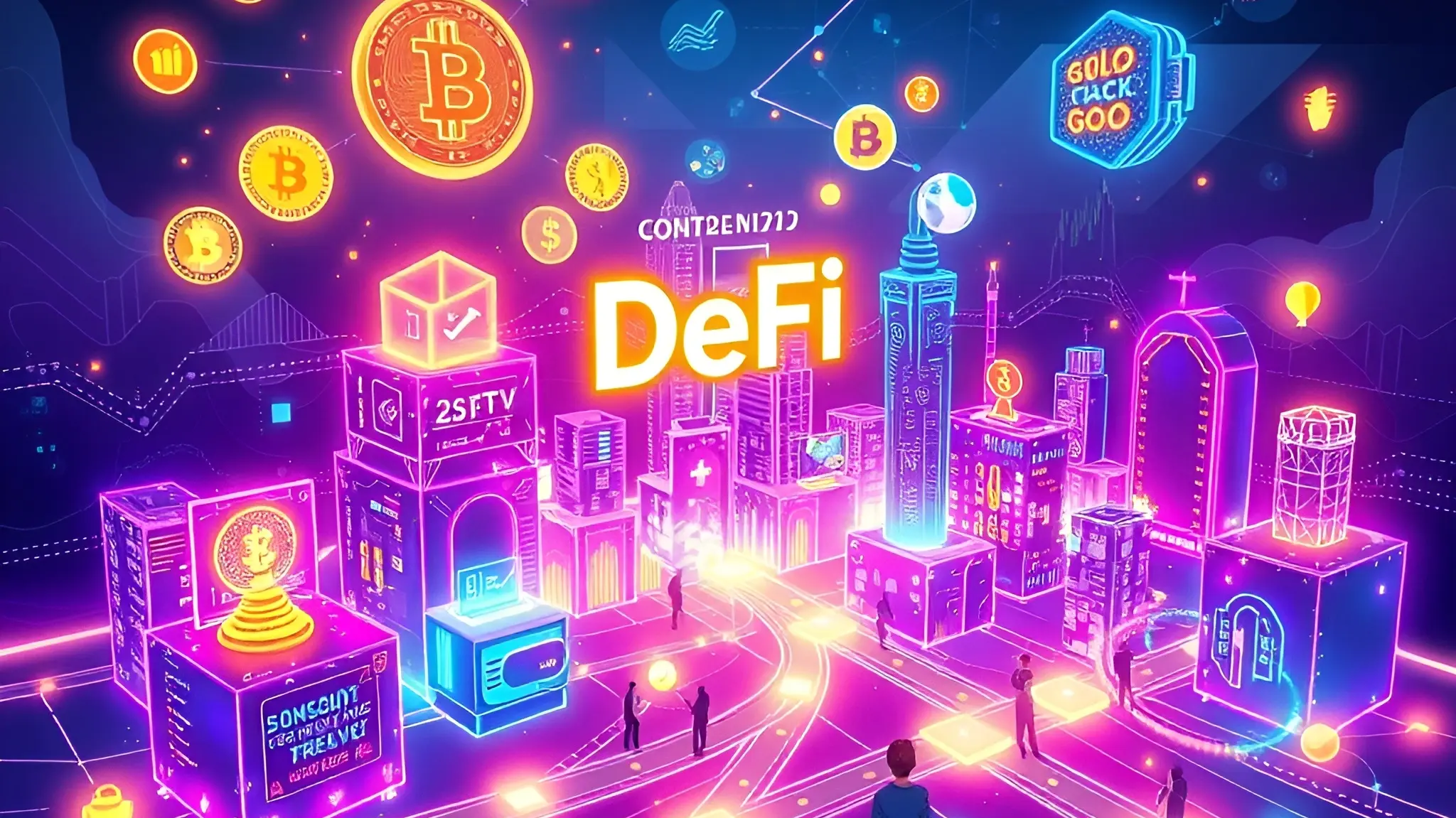What Does the Word Ethereum Mean?
The term “Ethereum” derives from “ether,” reflecting its role as a medium facilitating decentralized communication.
The suffix “-ium” indicates a transformative condition, emphasizing its function in enabling smart contracts and decentralized applications (dApps).
Ethereum serves as a decentralized platform that enhances transparency and trust in digital agreements, fostering a robust ecosystem of diverse applications across various industries.
In this article, let’s break down this innovative network, that pivotal in reshaping digital transactions, and further insights reveal the implications of its advancements.
Key Takeaways:
ShowThe Etymology of Ethereum

The term “Ethereum” is derived from a combination of linguistic roots and conceptual frameworks that reflect its foundational purpose in the blockchain ecosystem.
The prefix “ether” suggests a connection to the ancient Greek concept of aether, representing a medium that fills space and facilitates communication.
In the context of blockchain, this alludes to a decentralized network that transcends traditional barriers.
The suffix “-ium” denotes a state or condition, hinting at the transformative nature of the platform.
Together, these components encapsulate Ethereum’s role as an enabling environment for decentralized applications and smart contracts.
This etymology underscores the innovative potential of Ethereum in revolutionizing how digital transactions and interactions occur, positioning it as a pivotal element in the future of technology.
Ethereum as a Decentralized Platform

Ethereum operates as a decentralized platform that facilitates the creation and execution of smart contracts, which are self-executing agreements coded on the blockchain.
This capability not only enhances trust and transparency but also underpins a diverse ecosystem of decentralized applications (DApps) that leverage Ethereum’s infrastructure.
Understanding the interplay between smart contracts and the DApps ecosystem is essential for grasping the full significance of Ethereum’s decentralized nature.
Smart Contracts Explained
Smart contracts serve as a pivotal innovation within the Ethereum ecosystem, enabling self-executing agreements with the terms directly written into code.
These contracts eliminate the need for intermediaries, enhancing efficiency and reducing costs.
Their decentralized nature allows for trustless interactions among parties, which is essential in digital transactions. Key features of smart contracts include:
- Automation: Executing agreements without human intervention.
- Transparency: All parties can verify the contract terms on the blockchain.
- Security: Cryptographic techniques protect against unauthorized modifications.
DApps Ecosystem Overview
At the core of modern blockchain technology lies the decentralized application (DApp) ecosystem, which leverages Ethereum’s robust infrastructure to facilitate a wide array of applications across various industries.
This ecosystem promotes innovation by allowing developers to build applications that operate without central control, enhancing security and transparency.
| Category | Examples | Features |
|---|---|---|
| Finance | DeFi Platforms | Liquidity, Yield |
| Gaming | Crypto Games | Tokenization, NFTs |
| Social Media | Decentralized Networks | Privacy, Ownership |
The DApps range from financial services to gaming and social media, showcasing Ethereum’s versatility.
By enabling these applications, Ethereum fosters a collaborative environment that empowers users and developers alike, shaping the future of digital interaction.
The Role of Ether (ETH)

Ether (ETH) serves as the primary digital currency within the Ethereum network, enabling seamless transactions and value exchange.
Its functionality extends beyond mere currency, as it is essential for interacting with smart contracts, which automate processes and facilitate decentralized applications.
This dual role positions Ether as a critical component of Ethereum’s ecosystem, driving both economic activity and technological innovation.
Digital Currency Functionality
Ether serves as the primary medium of exchange, facilitating transactions and incentivizing network participation. Its functionality can be encapsulated through three key roles:
- Transaction Fees: Ether is used to pay for gas, the computational cost of executing transactions and smart contracts on the network.
- Value Transfer: Users can transfer Ether for various goods and services, making it a versatile digital currency.
- Staking and Governance: With Ethereum’s shift to proof-of-stake, Ether holders can stake their assets to secure the network, earning rewards and participating in governance decisions.
Thus, Ether not only powers the Ethereum ecosystem but also represents a dynamic digital currency in the evolving blockchain landscape.
Smart Contracts Interaction
The interaction between Ether (ETH) and smart contracts is a fundamental aspect of the Ethereum ecosystem.
Ether serves as both a digital currency and a utility token, facilitating transactions and incentivizing the execution of smart contracts.
Each contract deployed on the Ethereum blockchain requires computational resources, known as gas, which users pay for in ETH.
This mechanism guarantees that developers and validators are compensated for their contributions, fostering a sustainable environment for innovation.
Additionally, smart contracts autonomously execute predefined conditions, enabling trustless transactions and diverse applications across industries.
By linking Ether’s value to these programmable agreements, Ethereum not only enhances transactional efficiency but also empowers a decentralized economy, driving forward the potential of blockchain technology.
Smart Contracts and Their Importance

While many blockchain technologies offer various functionalities, smart contracts stand out as a pivotal innovation within the Ethereum ecosystem.
These self-executing contracts, with the terms directly written into code, facilitate automated and trustless transactions. Their importance can be highlighted through three key aspects:
Self-executing contracts coded directly into blockchain enable automated, trustless transactions, revolutionizing the way agreements are executed.
- Automation: Reduces the need for intermediaries, streamlining processes and lowering transaction costs.
- Transparency: All participants can view the contract terms, fostering trust and reducing disputes.
- Security: Cryptographic principles guarantee that once deployed, smart contracts are immutable and resistant to tampering.
The Concept of Decentralized Applications (dApps)

Building on the foundation established by smart contracts, decentralized applications (dApps) represent a significant advancement in the Ethereum ecosystem.
dApps leverage the immutable and transparent nature of blockchain technology to provide innovative solutions across various sectors, including finance, gaming, and supply chain management.
Unlike traditional applications, dApps operate on a peer-to-peer network, ensuring greater security and user autonomy.
| Feature | dApps | Traditional Apps |
|---|---|---|
| Centralization | Decentralized | Centralized |
| Transparency | Open-source and verifiable | Proprietary and opaque |
| User Control | Users retain ownership | Controlled by developers |
| Operation Cost | Typically lower through tokens | Higher due to fees |
Ethereum’s Influence on Blockchain Technology

As Ethereum emerged as a pioneering force in the blockchain landscape, it considerably influenced the development and adoption of decentralized technologies.
Its innovative smart contract functionality has catalyzed various applications, reshaping industries. Key aspects of Ethereum’s influence include:
- Decentralized Finance (DeFi): Ethereum enabled the creation of decentralized financial systems that eliminate intermediaries, enhancing accessibility and efficiency.
- Non-Fungible Tokens (NFTs): It popularized NFTs, allowing unique digital assets to be traded on-chain, revolutionizing art, gaming, and collectibles.
- Interoperability: Ethereum’s protocols have fostered collaborations among various blockchain networks, promoting a more interconnected ecosystem.
The Transition to Ethereum 2.0

The transformation to Ethereum 2.0 represents a significant evolution in the Ethereum ecosystem, aiming to address scalability, security, and sustainability challenges faced by the original network.
This upgrade introduces a shift from the energy-intensive Proof of Work (PoW) to the more efficient Proof of Stake (PoS) mechanism, enhancing transaction throughput while reducing carbon footprint.
These advancements signify a commitment to not only improve performance but also guarantee a more eco-friendly blockchain, positioning Ethereum as a leader in the evolving digital landscape.
| Feature | Ethereum 2.0 |
|---|---|
| Consensus Mechanism | Proof of Stake (PoS) |
| Block Time | 12 seconds |
| Scalability | Shard Chains |
| Security | Enhanced Validator System |
| Environmental Impact | Reduced Energy Consumption |
The Significance of Decentralized Finance (DeFi)

Decentralized Finance (DeFi) represents a transformative shift in the financial landscape, enabling peer-to-peer transactions without intermediaries.
This innovation leverages blockchain technology to democratize access to financial services, promoting inclusivity and transparency.
The significance of DeFi can be highlighted through the following points:
- Accessibility: DeFi platforms allow anyone with internet access to participate in financial activities, eliminating barriers associated with traditional banking.
- Control: Users retain ownership of their assets, mitigating risks associated with centralized institutions.
- Transparency: Smart contracts facilitate trustless transactions, ensuring that all operations are verifiable on a public ledger.
Ethereum’s Impact on the Future of Finance

Ethereum plays a pivotal role in shaping the future of finance by providing a robust platform for developing decentralized applications (dApps) and smart contracts.
Its underlying blockchain technology enables seamless peer-to-peer transactions, eliminating the need for intermediaries and reducing associated costs.
As traditional financial systems face scalability and security challenges, Ethereum’s adaptability allows for innovative financial solutions such as decentralized exchanges and automated lending protocols.
In addition, Ethereum’s shift to a proof-of-stake consensus mechanism enhances energy efficiency, appealing to environmentally conscious investors.
The integration of Ethereum with emerging technologies like artificial intelligence and the Internet of Things (IoT) promises to revolutionize financial services, creating a more inclusive and efficient ecosystem.
Wrapping Up
In the grand theater of finance, Ethereum struts across the stage, masquerading as the revolutionary hero, while Ether twirls in the spotlight, often confused with mere currency.
Smart contracts, the play’s quirky sidekicks, promise to eliminate trust issues, yet occasionally leave audiences scratching their heads.
As the version 2.0 attempts to don a snazzier costume, one can’t help but wonder: what does the word Ethereum mean? is this a groundbreaking or just another act in the ever-expanding circus of blockchain?







